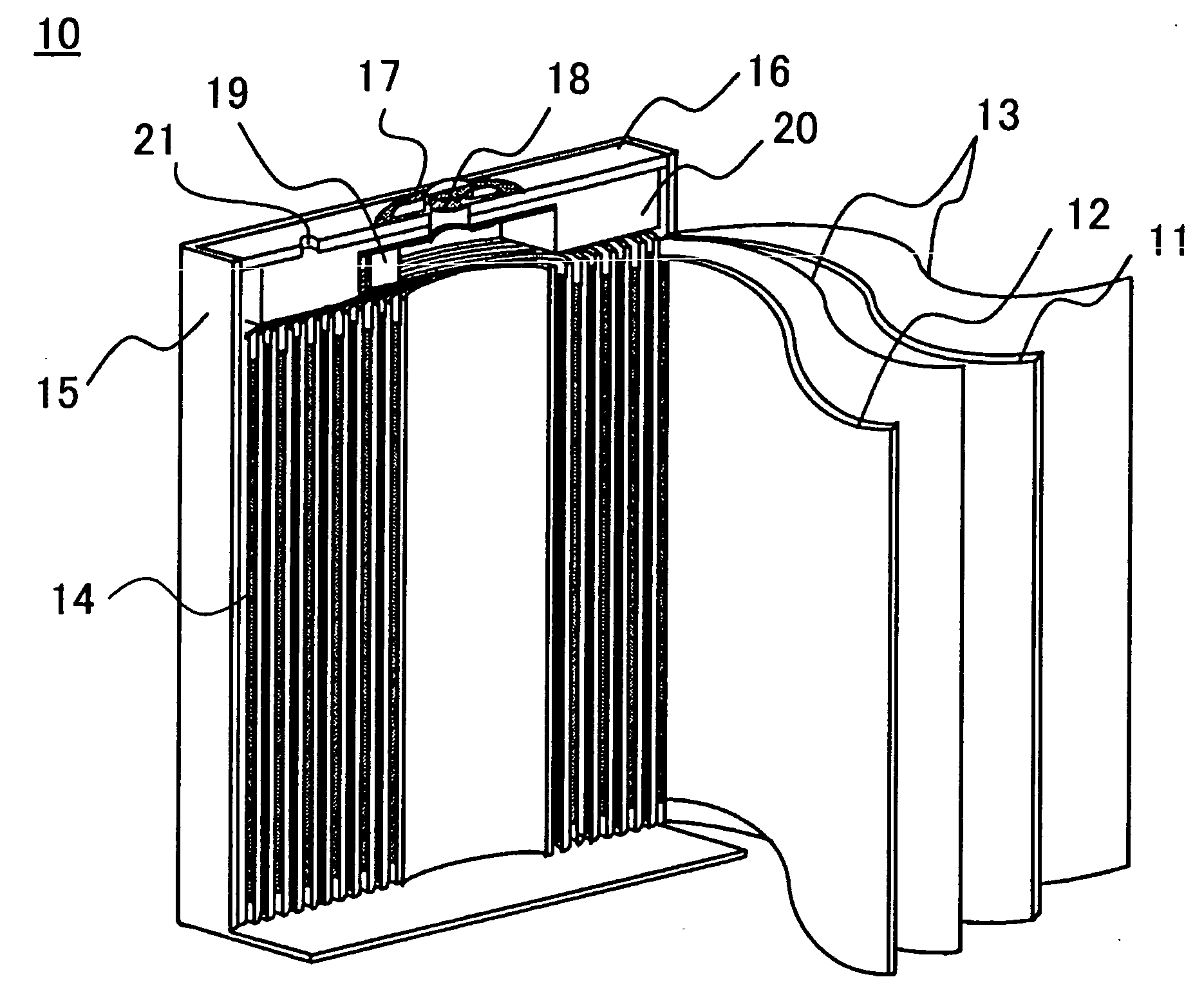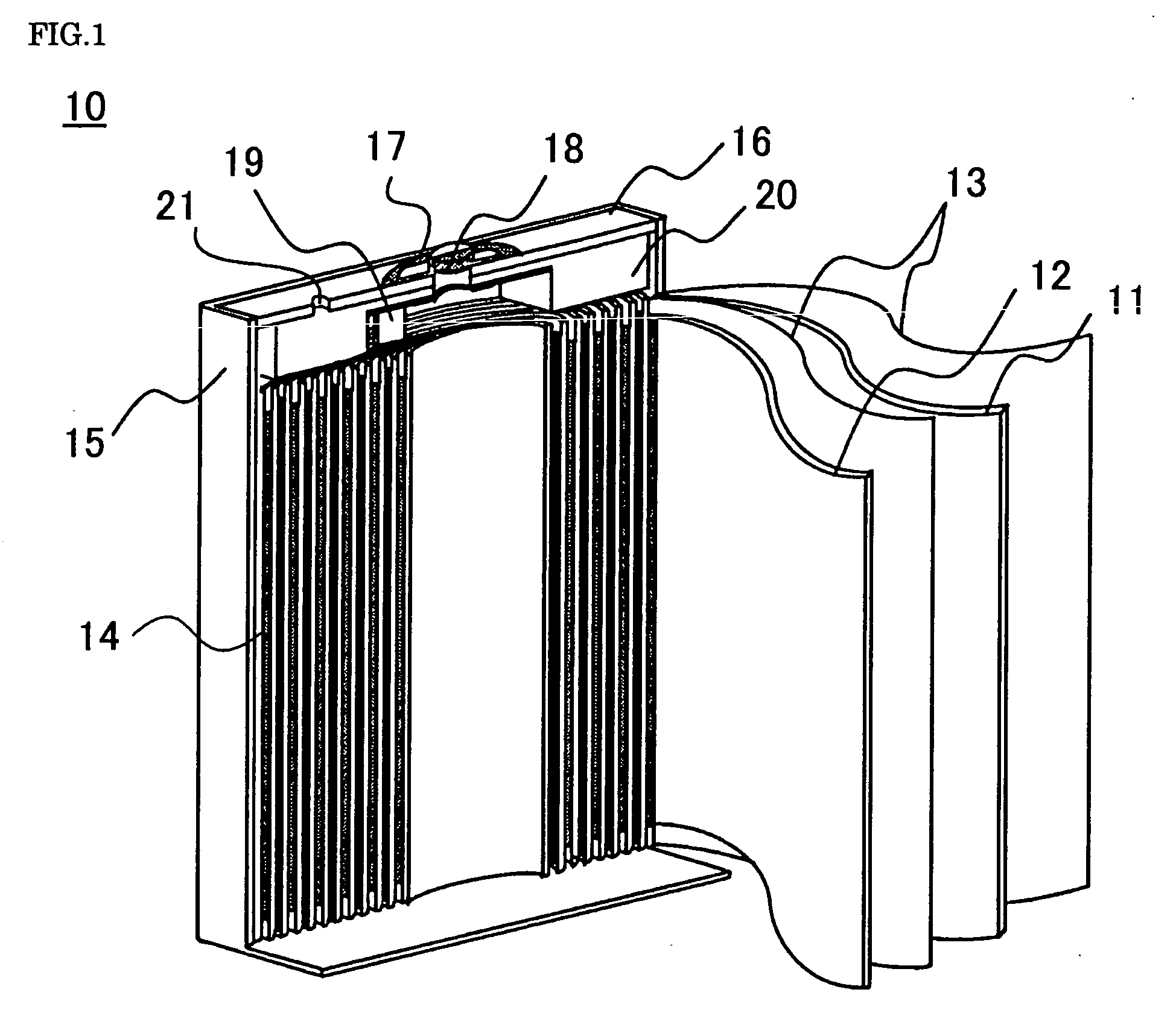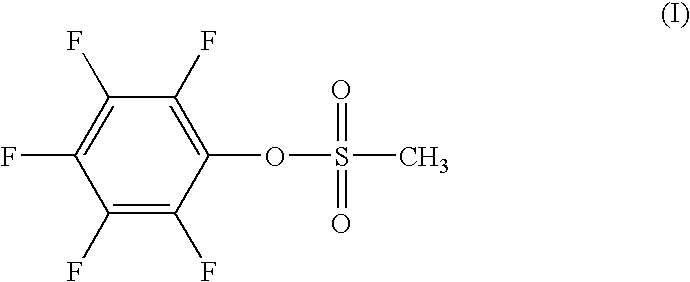Nonaqueous electrolyte secondary battery, nonaqueous electrolyte, and charging method therefor
a technology of nonaqueous electrolyte and secondary battery, which is applied in the direction of secondary cell servicing/maintenance, non-aqueous electrolyte cells, cell components, etc., can solve the problems of gas generation, lowering productivity, swelling, etc., and achieve good overcharging protection properties, and high thermal stability
- Summary
- Abstract
- Description
- Claims
- Application Information
AI Technical Summary
Benefits of technology
Problems solved by technology
Method used
Image
Examples
Embodiment Construction
[0051]Preferred embodiments for carrying out the invention will now be described in detail, together with comparative cases. It should be understood however that the embodiments below are merely illustrative examples of nonaqueous electrolyte secondary batteries for realizing the technical concepts of the invention. The embodiments are not intended to limit the invention to the secondary batteries here set forth. The invention can equally well be applied in many different variants without departing from the technical concepts set forth in the claims.
[0052]First of all will be described the specific methods for fabricating a nonaqueous electrolyte secondary battery that are common to the embodiments and the comparative cases.
Fabrication of Positive Electrode
[0053]The lithium cobalt oxide with dissimilar elements additives can be fabricated as follows. The initial raw materials used are: lithium carbonate (Li2CO3) as the lithium source; and as the cobalt source, tricobalt tetroxide (C...
PUM
| Property | Measurement | Unit |
|---|---|---|
| electric potential | aaaaa | aaaaa |
| charging voltage | aaaaa | aaaaa |
| charging voltage | aaaaa | aaaaa |
Abstract
Description
Claims
Application Information
 Login to View More
Login to View More - R&D
- Intellectual Property
- Life Sciences
- Materials
- Tech Scout
- Unparalleled Data Quality
- Higher Quality Content
- 60% Fewer Hallucinations
Browse by: Latest US Patents, China's latest patents, Technical Efficacy Thesaurus, Application Domain, Technology Topic, Popular Technical Reports.
© 2025 PatSnap. All rights reserved.Legal|Privacy policy|Modern Slavery Act Transparency Statement|Sitemap|About US| Contact US: help@patsnap.com



